Jon Young is a well-known naturalist, tracker, author and teacher based in Santa Cruz, California. I’ve heard many people praising his bird language classes, , but didn’t think I would ever be able to take one of his classes, because they’re too far away. S0 the moment I heard about his new book, What the Robin Knows: How Birds Reveal the Secrets of the Natural World, I scampered to my email, contacted his publisher and begged for a review copy. They kindly obliged. And that is my full disclosure. But if they hadn’t been so obliging, I would have scraped my pennies together for this one.
Studying bird language is different from bird watching. It is a nature awareness practice which uses the observation of commonplace birds, like robins and sparrows, to teach you about the larger workings of the nature and yourself.
In a nutshell, Young asks you to choose a place to sit outdoors and commit to sitting in this place regularly, for about 40 minutes per session, watching the birds, watching all that happens around you. This sit spot might be your yard, a public park, or the wilderness. It doesn’t matter where–all that matters is that the location is easy to access, and you go there regularly. Over time, you’ll learn what he calls the baseline environment looks, sounds, feels like. The baseline being the ordinary sets of bird sounds and bird motion you see and hear in that place, at that time or day, at that time of year. To facilitate this recognition, he teaches you the five basic types of calls birds make (alarm calls, companion calls, etc.), using online audio files to help with the most common birds. He goes on to teach about behavior, predators, etc.
Once you understand the baseline you will be able to tell when the baseline is disturbed, and eventually, you will be able to tell why. Knowing this allows you insight into the workings of nature. With study, what once seemed generic bird noise to you (if you heard it at all) becomes pinpoint-specific information. If the birds alert on something, for instance, with practice you can not only tell where that something is coming from, but you can distinguish whether that intruder is a person, a house cat or a hawk.
Indoors, we are all networked and interconnected by our electronic devices. (Twitter indeed!!) Outside, there’s just as much communication going on–and that communication is interspecies communication. Different types of birds listen to each other. They both help and trick each other. The coyote and the raccoon and the fox listen to all of them. It’s an intense world out there around the bird feeder or up in those maples in the park. And with a little study, you can plug into this world, and regain your place in it.
Why should you want to plug in? Lots of reasons. First, sitting in nature heals our frazzled brains and eases our souls. I don’t think it goes too far to think of this practice as meditation. Most of all, studying bird language gives you a reason or an excuse to spend time in nature–and that alone is enough.
Another reason is animal watching. If you like to take walks and hope to see a deer or a fox once in a while, you need to listen to the birds. Birds are the first alert system of the forest. Their alarm calls can show you where predators are moving. They also tip off all and sundry that you’re coming, clearing an empty path in front of you as efficiently as Hollywood bodyguards plow through paparazzi. Young says if you ever want to see other wildlife when you’re out walking, you need to ask the birds’ permission first.
Perhaps he says it all best:
Eons ago, Homo sapiens were just as alert and aware as all other creatures…our sensory equipment and our brains are still designed for this awareness. These instincts are still in each of us, just buried, maybe deeply buried. Connecting with bird language begins the process of unearthing them. It changes the whole dynamic of our lives immediately. We now recognize the robin. We recognize the sparrow. These birds lift us from our troubled minds. They give us a reason to move and see and listen respectfully. They unlock the outdoors. They reflect our knowledge and our attitude, and ultimately yield the first rite of passage when we’re allowed a close encounter with an animal that would otherwise have fled our presence long before.
Most of all I like this book because he asks a lot of you. At one point in the book he’s talking about how there’s no formula for this stuff, just lots of dedication and time, and notes, “The lifelong learning curve is the ultimate appeal of what we do.”
This made me laugh out loud. Appeal? The notion of working on one skill all your life (especially one as unglamorous as robin-watching) is not a popular notion it contemporary culture, when everything is the “20 Minute This” and the “4 Hour That.” But I understand the appeal of a lifelong practice myself, and I have the deepest respect of long term practitioners of any art.
I just finished the book and spent 40 minutes this morning in the backyard, utterly puzzled. It’s a beginning.
A note on the text:
The book is not structured like a “how-to” manual. It’s full of anecdotes and has a relaxed, meandering tone which is actually quite nice. It’s easy to imagine you’re just hanging outwith Jon Young in some nice green place, listening to his bird stories. The key concepts are woven in along the way. You don’t need to take notes as you read, or worry you’ll miss some important step. At the end of the book he gives a summary and set of instructions on how to actually begin your practice. And again, he provides audio files online to illustrate all the basic calls of the common birds, and references those audio files throughout the text.

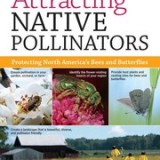
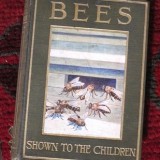
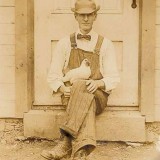
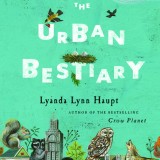
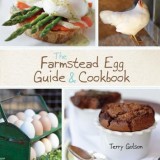
If you have Crows in your neighborhood they are easy to learn to understand,very vocal and louder than most other birds.
Do we ever have crows! He covers crows. Says they break all the rules of bird language. Which figures, really.
I have many huge oak and hickory trees in my yard as do all the neighbors. Birds abound. When I would go into the yard, the birds started warning each other. At other times, I would be indoors and hear such a cacophony that I would run outdoors to see what was happening with the birds. It was something more scary than I. I knew it had to be a cat. Sure enough, a neighbor cat would be lurking, tail twitching. It was easy to find the cat because of the intensity and concentration of noise and birds. The birds would be flopping along the ground one at a time, dragging a wing in an attempt to protect their offspring.
I would chase the cat with hurled pinecones and vocalizations of my own, hoping my attempted assault would keep the cat away for the day, at least. After about a week of this, the birds did not object to my coming into my own yard all alone. I really think they knew I was not a threat and helping them. They still sent up the alarm for cats.
Maybe I read too much into the occasions.
I would love to know more about their calls. I am “getting it” with the hens voices!
You’re not reading too much into it. The ganging up to warn about the cat is exactly the kind of thing he talks about. And they definitely will know who you are from your time outside. Basically, birds totally know what’s up and who’s who and who’s up to no good.
You’re a step ahead of me on this. I’m in the middle of reading this book. I’m reading it a little at a time. It requires thought, but provides many “aha!” moments. Karen Pryor has also written about the community of animals living in one place and how they interact. If you think about it, it shouldn’t be surprising at all that birds to each other and to other species. One added reason for me to understand bird language is to make sense of alarm calls, and I want to know who is out there in order to protect my hens and little dog.
Jon Young has totally transformed my relationship with nature, both at my own homestead in the city, and in “real” nature. It has also transformed my marriage, because we can go out into nature and really observe more so than we have ever done together as “regular” nature lovers. It is really difficult to explain in words how bird language is different from bird watching, but it is indeed, a very deep nature connection. Thanks for sharing! I’ve been thinking about reading it again, just to pick up more of his interesting anecdotes.
Definitely. Just as learning to forage edibles changed the way I see when I walk around the neighborhood, this knowledge is opening my eyes (or rather my ears) to bird sounds which were previously background noise. Now I want to know what they mean, what’s going on. I have a ways to go, though, before I can make sense of anything!
I often wonder how the birds that come to my hens’ food know that my hens are not predators. Hawks and owls, birds, would be avoided, I assume. The doves in my yard avoid everyone. The hens don’t mind any other bird in the yard. However, I often see them scurry from open yard and dart under a bush or picnic table or bench.
The hens only sound the alarm, a subdued but persistent call, for raccoons, never for any bird, even whatever they see that frightens them from above. I ponder their behavior and the behavior of other birds quite often.
Yes!
This is how we were created to live — supremely knowledgeable of the Creation — the guardians and rulers of the planet.
Oh, how we’ve fallen from our place!
Thanks for this book review.
Your review was so intriguing I purchased the book.
Why not scrape your pennies together and give a copy to someone who can’t afford a copy?
Your review was great – I’m adding it to my reading list.
And then there’s the library!
Thanks for turning me on to this book.
May I recommend in return Becoming Animal by Abram?
Another book that reminds us that we are part of this thing we call “nature.”
Wow, I have been doing this unconsciously for the past few months, and this post has helped it all crystallize in my mind. It’s springtime in Australia and the birds have been extremely aggressive towards each other. I’d be out in the garden listen to the happy chirps of the little honeyeaters, then hear something sharper and think, ‘Uh-oh, trouble, and see that a raven had landed on the roof next door. If you’re in to listening to audio files of birds – Peter Carey called it “angels gargling in a crystal vase”. Will try to get this book, thanks!
Pingback: Book Review: The Urban Bestiary | Root Simple